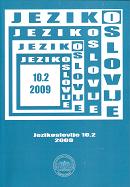Author(s): Elena-Daniela Cucui,Ana Dumitran / Language(s): Romanian
Issue: 3/2008
Artistic Presences at the Wooden Church from Tău. Apparently solitary, discrete in its modest architectural appearance and almost kneeled under the weight of the tile roof, the old wooden church of Tău Village (Roşia de Secaş commune, Alba County) never ceases to amaze us by the value and complexity of the pictorial ensemble which it accumulated along time. Subject of thorough researches carried out between the 70’s and 80’s of the last century by Ioana Cristache-Panait and very recently by Ioana Rustoiu, the most ardent questions that it raised either found their answer, or seemed difficult to clear up, because of lack of information. A few among these were resolved following an attempt of recuperating the activity of the painters from Feisa, though belated to may be exploited within the material that was dedicated to them, material that was published recently. Within this context, we will try to complete the picture of an exceptional monument, after, beforehand, we will proceed to a sketchy presentation of the already stated conclusions.
The building was erected somewhere in the XVIIIth century, without being able to state whether year 1780, noted by the chronicle of the parish, refers to the moment of building or only just to a restoration of larger proportions, Occasion on which the church would have also been painted. Inscription „Popa Radu 1820” from the leg of the altar table was meant, for sure, to recall only an important transformation, which assumed the extention towards west of the nave and its superelevation with a belfry to which, from safety reasons, was renounced in 1921.
The pictorial decoration was made in several stages. In a relative chronological order, the building was visited by painters Ivan from Răşinari, to whom were attributed the seven icons preserved from the church legacy, and dated in the first half of the XVIIIth century, then by an anonymous painter to whom the nave’s painting is owed, totally destroyed; probably he also painted the upper part of the catapetasma, the intrados and its back; between 1822-1829 there may be noted a third artistic presence in Tău, the painters Savu and Simion Poienaru from Laz definetly being the authors of the painting from the altar, the imperial doors, Jesus Christ on the cross, with St. John on the left and Holy Virgin on the right, and the apostles’ frieze from the catapetasma also being their creation.
More...


